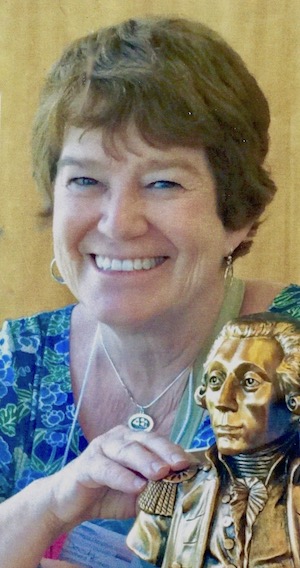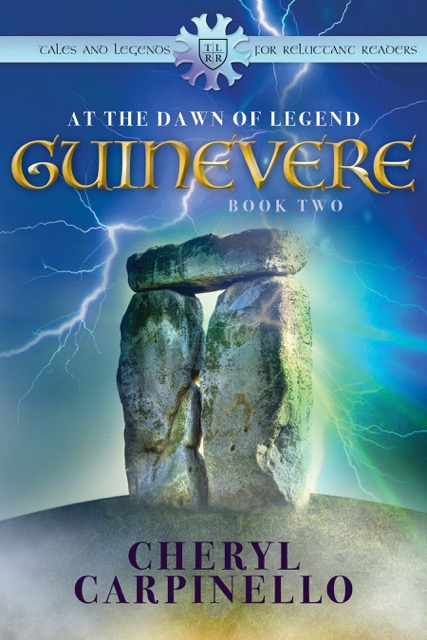In A Buss from Lafayette, I had a hard time deciding who Clara would guess the old veteran is in the following conversation:
Stamping my foot in frustration, I turned to see whose presence was interfering with the fulfillment of my plan. Among the familiar characters, I saw a tall, skinny stranger who looked to be nearly eighty years of age. He was wearing a rather moth-eaten old uniform of buff and blue. His pure white hair was also in a bygone style, long— if a bit sparse in front— and tied behind with a black ribbon. He held a black tricorne decorated with a black and white cockade. Even through my irritation, I could see that the most interesting thing about the stranger was not his antiquated clothes, his overly long hair, or his three-cornered hat with its leather flower, but his excitement. He was about the most animated person, especially of his age, that I had ever seen. I moved closer to the old gentleman. If I had to wait until he was done talking to get what I wanted from Mr. Towne, I might as well listen to what he had to say.
“You will never guess who I was mistook for yesterday!” he exclaimed. His merry eyes looked at each of us listeners in turn.
All of our guesses fell wide of the mark, from Mr. Towne’s boisterous, “President Adams?” to my softly spoken, “Old Father Christmas?”
“No, t’was for the Nation’s Guest!” the stranger declared, slapping his thigh. “
What? Someone thought you to be Lafayette? Are you jesting?” Mr. Towne spluttered.
The stranger went off into gales of laughter. “I am telling you the truth of it: folks in the hundreds— nay, the thousands— thought me to be Lafayette himself!”
- A Buss from Lafayette © 2016 by Dorothea Jensen
The reason for my difficulty? I couldn't decide what Clara would call Santa Claus. I explained this in a Bublish.com "Insight" I wrote last year:
I had trouble deciding what Clara's guess about the old veteran's mistaken identity should be. Clement Moore's poem, "A Visit from Saint Nicholas" (sometimes called "'Twas the Night Before Christmas") was actually published in 1823, two years before the time of my story. This verse, with its Dutch Sinter Klaas inspiration, eventually had a huge impact on the American concept of Santa, but I figured it might not have been widely known in 1825. Therefore I just called the jolly old elf "Old Father Christmas", an earlier English tradition. (Even though I am so fond of Moore's poem that I model all my Izzy Elf stories on it, anapestic tetrameter and all.)
Anyway, you may imagine my delight in coming across this Christmas celebration at Old Sturbridge Village, which depicts Clara's era (more or less). Please note the reference to Father Christmas in the last line, followed by a picture of this historic version of Santa. As OSV scrupulously strives for historical accuracy, I'm taking this to mean I was correct in my decision to use this term in A Buss from Lafayette. Woo hoo.
All I can say is THANK YOU, Old Sturbridge Village!
Buy links for A Buss from Lafayette can be found up above on the right side of this page!















































